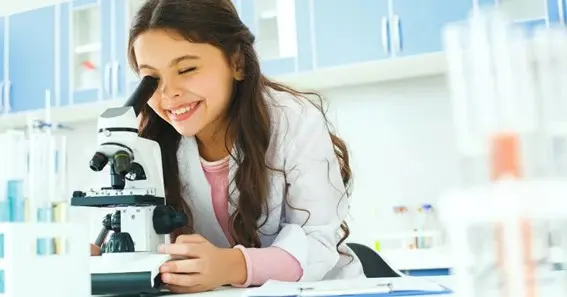Microscopic study is the magnifying glass through which we peer into the intricate fabrics of the world—be it the biology of living organisms, the structure of materials, or the characteristics of diseases at the cellular level. This scientific discipline not only grants us access to a universe unseen by the naked eye but is foundational in a plethora of fields, from medicine to materials science. If you’ve just set out on your microscopic study adventures or want to round out your existing toolkit, this comprehensive guide will walk you through the essential supplies and their functions that you’ll need at the microscopic helm.
The Microscope: Your First and Foremost Tool
These instruments are the centerpiece of any microscopic study, ranging from simple magnifiers to high-powered compound microscopes. When selecting a microscope, consider:
- Magnification Power: This defines how enlarged the specimen will appear. Higher magnification helps in viewing smaller details.
- Resolution: The higher the resolution, the more detailed the image. Look for microscopes with good-quality optics.
- Type of Microscope: A compound microscope is the best for viewing transparent or translucent samples, while stereo microscopes are ideal for opaque samples.
It’s important to choose a microscope that aligns with your needs and budget and always look for reputable brands and reliable sellers.
Also Read N: Exploring Mount Blackburn
10 Necessary Supplies You Need for Microscopic Study
- Prepared Slides and Specimen Containers
Prepared tissue slides are specimens that have been fixed and stained, ready for viewing under a microscope. When selecting specimens, think about the subject of your study. For biological samples, you might start with a set that includes various tissue types, microorganisms, and plants. In addition to slides, invest in good-quality storage boxes to keep your slides or other samples safe and organized.
- Microtomes and Sectioning Equipment
Microtomes are used to prepare extremely thin slices of material, usually for examination under a high-powered microscope. A decent microtome is necessary for any serious study involving sectioning.
- Stains and Dyes for Contrast
Stains and dyes are crucial in microscopy to improve contrast and facilitate visualization of specific structures within a cell or organism. Popular options include:
- Hematoxylin and eosin (H&E): Probably the most widely used combination of stains in pathology, H&E staining highlights the cellular nucleus using hematoxylin and the cytoplasmic proteins with eosin.
- Methylene Blue: Used to highlight cell nuclei but also shows up in other structures.
- Gram Stain: This is used to classify bacteria into two categories based on their cell wall.
Explore and understand the purpose of different staining methods and choose relevant ones for your study.
- Mounting Media
Mounting media are used to affix a specimen to a slide and preserve it for viewing. There are various types depending on the nature of the specimen. Try using a medium that hardens for permanent mounts, such as Canada balsam. For temporary but air-bubble-free mounting, consider using glycerin jelly.
- Pipettes and Dissection Tools
Pipettes are essential for transferring small amounts of liquid. They come in various forms – from simple droppers to sophisticated micropipettes. Dissection tools like scalpels and needles are used to prepare specimens for viewing or to dissect larger samples to obtain specific parts for study.
- Glassware and Consumables
Various glassware, such as Petri dishes, test tubes, and culture flasks, will be necessary for preparing samples and conducting various procedures. Invest in a good set of laboratory-grade glassware and associated consumables like coverslips and cover glasses.
- Etching and Polishing Supplies
For non-biological samples, specifically in materials science, the preparation of surfaces becomes critical for accurate analysis. Etching solutions and polishing equipment are, therefore, indispensable supplies.
- Safety Equipment
Lastly, safety goggles, lab coats, and gloves are non-negotiable. Safety should always be a top priority in any scientific endeavor, especially with the use of chemicals, biological samples, and high-energy equipment.
Also Read P: Maximizing Potential: How Business Loans Drive Small Business Success
Ensure Compliance and Ethical Considerations
Especially when working with human tissue samples, it’s imperative to ensure compliance with local regulations and ethical guidelines. Obtain the appropriate consents and approvals, and always be conscious of the source and handling of your samples.
Assemble Your Supplies, and You’re Ready to Go!
Microscopic study is both an art and a science and having the right tools can significantly improve the quality of your observations. By assembling the supplies mentioned in this guide, you’ll be well on your way to countless hours of discovery and learning under the lens of a microscope. Remember that while having the best equipment is beneficial, the true value of your study lies in the diligence, curiosity, and precision you bring to each slide and sample. Happy exploring!










